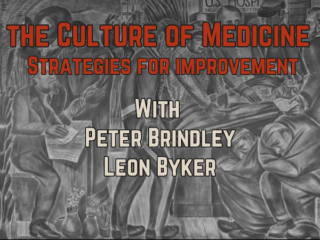
Ep 199 Trauma Airway and Airway Trauma
In this EM Cases main episode podcast, we tackle the complexities of trauma airway management, including direct trauma to the airway. We discuss indications and timing of intubation, penetrating neck trauma, the head injured patient, the agitated patients and the soiled airway. The critical question is: when should we deviate from, delay or modify RSI, and how do we navigate the unique challenges presented by trauma airways and airway trauma? Dr. George Kovacs and Dr. Andrew Petroniak answer this and other questions such as: how should we re-sequence the trauma resuscitation depending on immediate life-threats? When is immediate vs delayed intubation recommended? How useful are the Zones of the neck in penetrating neck trauma? What is the optimal dosing of airway medications in the sick trauma patient? How should we modify our airway strategy for the severely head injured patient and/or agitated patient? When should we consider ketamine facilitated fiberoptic intubation in the trauma patient? and many more... Please consider a donation to EM Cases to ensure ongoing Free Open Access Medical Education here: https://stg-emergencymedicinecases-emcstaging.kinsta.cloud/donation/
Ep 198 Understanding and Improving Culture in Emergency Medicine: Key Insights
In this EM Cases podcast Anton chats with Dr. Peter Brindley and Dr. Leon Byker who have a deep interest in the Culture of Medicine to explore what culture in medicine is, why culture is so important, and then drive home 10 strategies to improving the culture in our departments emphasizing the importance of human connection, empathy, open communication, and a willingness to learn from mistakes in creating a positive and fulfilling work environment, so that we love our work, we love our department, we love taking care of our patients and our patients have better outcomes... Support EM Cases and Free Open Access Medical Education by making a donation now: https://stg-emergencymedicinecases-emcstaging.kinsta.cloud/donation/
Ep 197 Acute Heart Failure Risk Stratification and Disposition
We over-admit low risk acute heart failure patients and under-admit high risk heart failure patients. In this podcast we discuss the diagnostic accuracy of various clinical features, lab tests and imaging modalities for acute heart failure, the 3 validated risk stratification tools and a simple approach to PoCUS for the diagnosis and prognostication of acute heart failure in the ED to improve our diagnostic accuracy and disposition decisions for patients with acute heart failure... Help Support EM Cases by Giving a Donation here: https://stg-emergencymedicinecases-emcstaging.kinsta.cloud/donation/
Ep 196 Pediatric Meningitis Recognition, Workup and Management
In this episode: recognition, risk stratification, decision tools, indications for lumbar puncture in the febrile pediatric patient, tips and trick on performing LPs in children, and ED management of pediatric meningitis. We answer such questions as: what are the test characteristics of the various clinical features of meningitis across various ages? How does one differentiate between meningitis and retropharyngeal abscess on physical exam? How do the Canadian and American guidelines on work up of well-appearing febrile infants compare when to it comes to indications for lumbar puncture? Which patients with suspected meningitis require imaging prior to lumbar puncture? How do we best interpret the various CSF tests to help distinguish between viral and bacterial meningitis? What are the indications and timing of administering dexamethasone in the pediatric patient with suspected meningitis? and many more.... EM Cases is Free Open Access; please consider a donation to help ensure that EM Cases remains Free Open Access on our donation page https://stg-emergencymedicinecases-emcstaging.kinsta.cloud/donation/
Ep 195 Management of Subarachnoid Hemorrhage
Once the diagnosis of nontraumatic subarachnoid hemorrhage (SAH) has been made, our job is not done. Mortality in SAH patients can be up to 30% even without neurological deficit. Paying attention to the time-sensitive details of ED management of SAH patients can have a significant impact on their outcome. In this second part of our 2-part podcast series on subarachnoid hemorrhage with Dr. Katie Lin and Dr. Jeff Perry we answer questions such as: what are the 4 critical priorities in the initial stabilization of the patient with a suspected massive subarachnoid hemorrhage? When is a CT plus CTA of the head indicated up front in the management of patients with suspected subarachnoid hemorrhage? What is the evidence for oral nimodipine in improving outcomes in patients with subarachnoid hemorrhage and how does it work? What can we do in the ED to prevent rebleeding in patients with subarachnoid hemorrhage? What are the simplest and best prognostic tools available for spontaneous subarachnoid hemorrhage to help counsel families and patients? and more...
Ep 194 Subarachnoid Hemorrhage – Recognition, Workup and Diagnosis Deep Dive
Anton is joined by the world's leading EM researcher in subarachnoid hemorrhage diagnosis Dr. Jeff Perry and EM-Stroke team clinician Dr. Katie Lin for a deep dive into why we still miss this life-threatening diagnosis, the key clinical clues, proper use of decision tools, indications for CT, indications for CTA, indications for LP and CSF interpretation for the sometimes elusive diagnosis of subarachnoid hemorrhage... Help support EM Cases by making a donation: https://stg-emergencymedicinecases-emcstaging.kinsta.cloud/donation/







